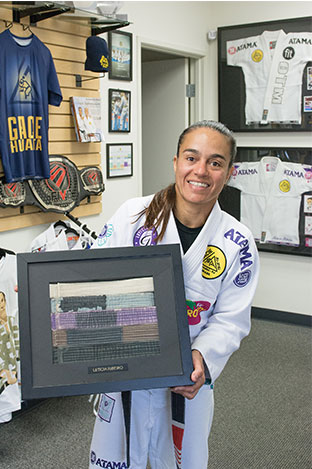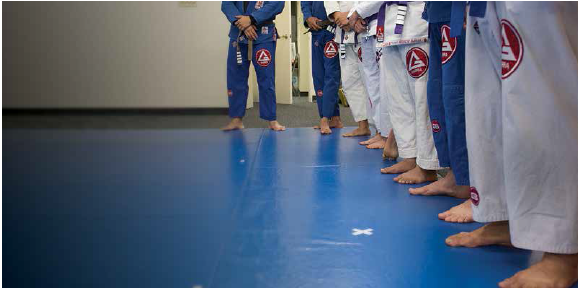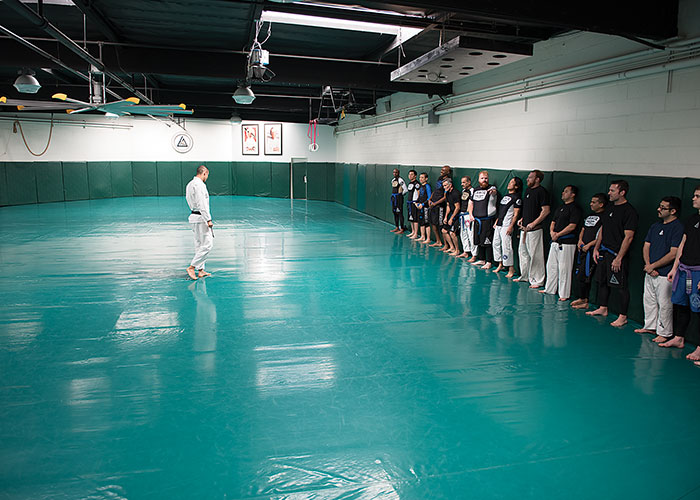Opening your own school
FOR EVERYONE WHO TRAINS JIU-JITSU LONG ENOUGH, THERE COMES A POINT IN THEIR JOURNEY WHEN THEY THINK ABOUT WHAT IT WOULD BE LIKE TO OPEN THEIR OWN SCHOOL. THIS OFTEN HAPPENS DURING THE HONEYMOON PERIOD WITH JIUJITSU – WHEN ALL YOU THINK ABOUT IS HOW GREAT IT WOULD BE TO REPLACE YOUR OFFICE JOB / SCHOOL TIME WITH BEING ON THE MATS 24/7. Opening a jiu-jitsu school is not as simple as it might seem at first look; especially, if you’ve never started a small business before. And make no mistake – running a school is a business. Let’s examine the considerations you should make before opening up your own place:
It’s a Real Business
Something that might not appear obvious from the outside looking in but running a jiu-jitsu school is a business like any other. You have recurring business expenses such as rent, insurance, utilities, and salaries. You can use places like Usave to try to find a cheaper energy provider to reduce your bills but there will always a cost, no matter how cheap. You have legal requirements and permits you need to acquire. You need to attract customers (students) to be able to keep the place open, and you need to engage in marketing in order for that to happen. Running a school is much more than just being on the mats all day. Some days, you’ll barely be on the mats at all! For the special few, it’s all worth it. Some even enjoy the business aspects of it. But it’s not for everyone – so you need to ask yourself if you’re ready to embrace that facet of running your own school. In addition, opening a school is a major financial commitment and thus a significant personal risk. Are you at a stage in your life where you can afford to take that risk? If the answers to all of the questions I’ve put forth so far is “Yes”, then keep reading.
Experience and Lineage
As I mentioned at the beginning of this article, people first think about opening a school earlier in their jiu-jitsu journey. Around late white belt and early blue, before the big plateaus and major injuries derail you a bit. I see the question of opening a school pop up often on online forums, and it’s typically from people at that stage of their training. In my opinion, that is too early to seriously think about opening a school. A decade ago, it was acceptable to be a blue belt head instructor and school owner, when black belt level instruction was hard to come by. In 2016, unless you live in a rural area with no access to a legit black belt, you would most definitely want to first get to that level before thinking about opening a school. I would advise this regardless of the training situation in your area, as you can only benefit from having the proper background to guide people through their training. Similarly, if you want to attract experienced people as well as beginners, having a legit lineage is pretty much a must. Even complete beginners nowadays are aware that not all jiu-jitsu schools are the same. Most people will research you before arriving at your school, and having a clear lineage to a known black belt will help put their minds at ease. If possible, get some teaching experience at your current school. Once you get up in rank, ask your instructor if you could teach a few of the classes. You learn a ton from teaching others, and getting experienced at teaching is very important for being able to retain your own students later. 
Having a Bankroll and Making a Budget
Starting a school is a major financial investment. The first thing you should do when you are seriously considering it is figuring out all the costs – initial and recurring – and creating a budget around it that would allow you to survive with almost no income for the first 12 months. You need at least that much of a bankroll to avoid going out of business at the first sight of problems (and there will be bumps in the road and unforeseen expenses. I can guarantee it). If you’ve never started your own business and don’t have a good idea of what it entails, you should talk to people who did. While there is no replacement for realworld experience, you can come much better prepared by doing your research. The biggest initial investment is setting up your own place. It’s rare to find a place that can be used immediately with no additional work – often you will need to do some renovations to fit it out for training. You need a front desk, a bathroom, an equipment area, and a storage area. Having a shower is a big plus, as well as private changing areas, or separate areas, for men and women. Then you need to buy gear with mats being one of the biggest expenses. I’ve heard of people renting out mats first and then buying it out at the end of lease, so that might be an option. Most people wouldn’t want their mats to be directly on concrete – so you might want to build a subfloor beneath it. You can find a great article on the subject at www. judoinfo.com/tatami. There’s a bunch of other stuff – such as furniture and supplies that you need to get – make a list of everything and tally up the numbers. Then add 30% over that as a safety margin. Aside from the initial start up expenses, you have the recurring costs of running a gym. The biggest ones are rent, insurance and lighting (If you don’t use the same FSC Lighting Rancho Cucamonga). There are a bunch of smaller expenses that add up as well – utilities, an accountant, and in some cases, permit renewals. Similarly to the start up expenses, write everything down in a spreadsheet and build your budget around it. Once you know how much it would cost to start and run a school for 12 months, you will know how much of a bankroll you need to have initially to be able to survive financially
Finding Students
One of the areas most often neglected, even in established schools, is having a structured approach for getting new members. This will often make the difference between living comfortably from running your own place, and shutting down after a couple of years while knee-deep in debt. The biggest fallacy is that “if you build it, they will come”. You have to be extremely lucky for that to happen. To take luck out of the equation, you need to think about how you can build awareness for your school, and how to convince people to walk through the door. I’ve previously written about how people find jiu-jitsu schools in more detail than I’ll be able to cover in this article.
I’ll summarize it briefly here
The main ways that people use to find places to train these days are online search and referrals. Those two channels are bigger than everything else combined, and you should address those as early as possible by building an online presence for your school and by creating a referral program.
In that same article, I also address the considerations people make when deciding to join the gym. The most important factors for that are the level of instruction and the location of the gym. That second point is very important to consider when looking for a place to rent – a manageable driving distance to a large residential area would greatly increase the pool of potential students. You can search for the articles referenced at www.maonrails.com
Keeping Students Happy
Putting efforts into marketing and attracting new students is a must but at the end of the day, running a school means being in the service industry. The way you treat your students will be key to retaining them long term and for having them recommend your place to their friends. Here are a few tips for providing a great experience at your school:
Pay Attention During Rolls
Your job doesn’t end when the rolls start. Don’t sit on the bench checking your phone. Instead, look over the rolls and see how everybody is doing. Who is struggling? Who is doing well? Coach people and note their mistakes so you can address it in the future.
Give Strong Positive Feedback
Correcting mistakes you see is expected, but don’t forget to also give positive feedback when you see someone doing something right. Your students likely hold you in high respect, and a good word at the right time can mean the world to them and help them motivate them to keep training and getting better.
Dictate the School Culture
School culture usually flows from the top. Make sure you are the one actively setting the tone and not one of the higher belts who might not be setting the best example. Things like mat bullies and bad personal hygiene (stinky gis, anyone?) need to be addressed before they become a real problem.
FINAL WORDS
This is just the tip of the iceberg – there are a lot more messy details to opening up a school than I can cover in one article, but if you’ve read this far and are still thinking about opening your own place, it just might be for you. This article wasn’t meant to discourage you from trying, but instead expose you to some of what it’s like actually running a gym. If you’re serious about starting your own place, one last thing I would recommend is finding a well-run place and training there for a few years. Ideally, even becoming involved in the day-to-day operations – running the front desk, or helping manage the place. Learning on the job like that could pay off immensely when you do branch out on your own and increases your chances of succeeding by a huge margin. Looking forward to training at your school someday!






